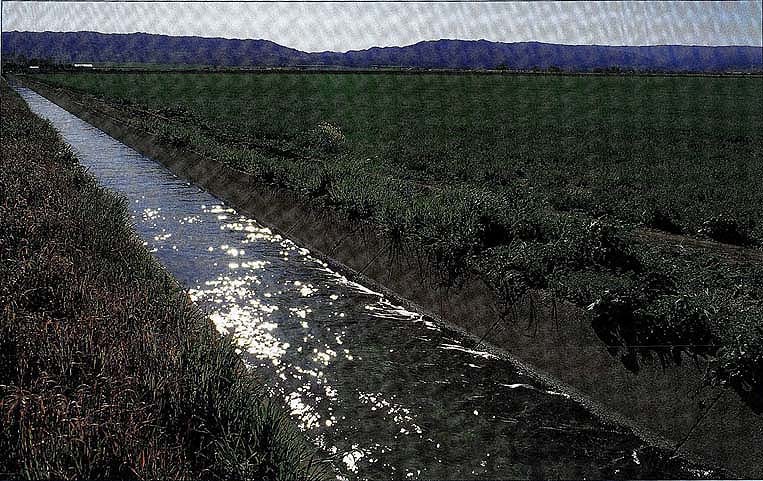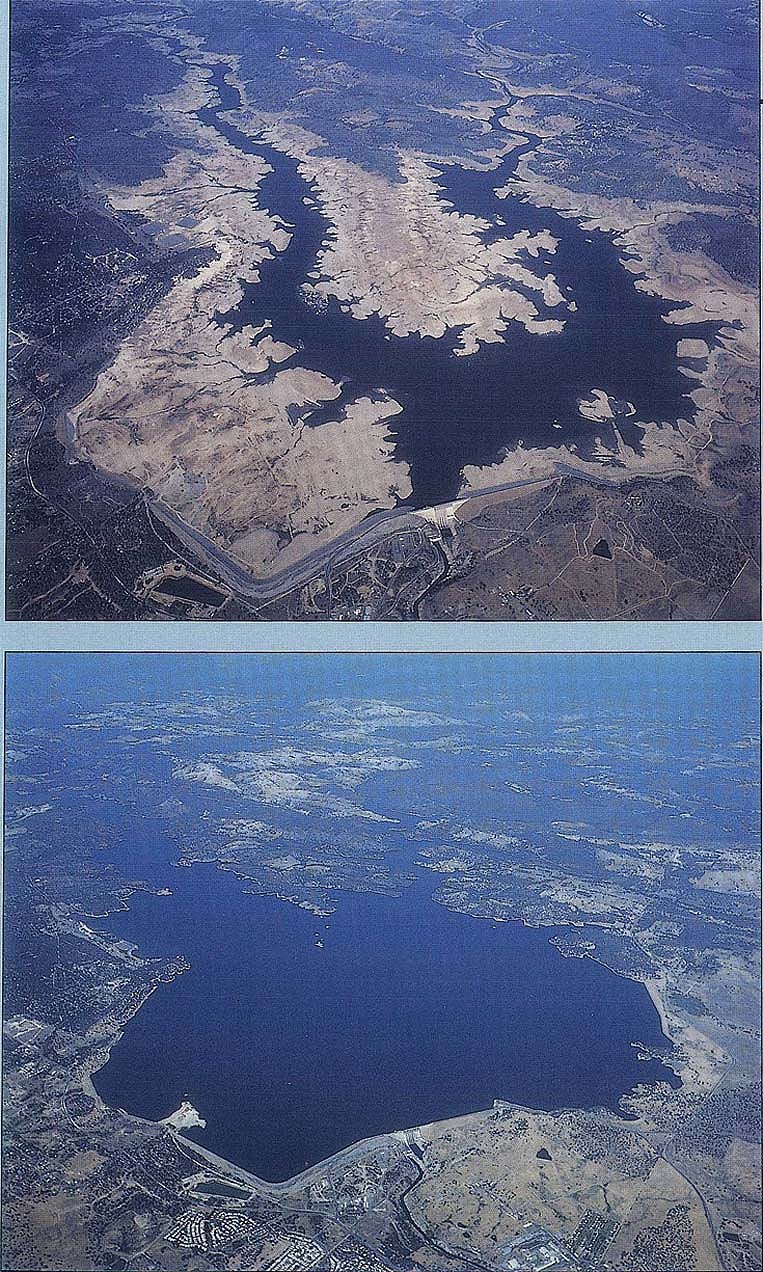All Issues
Well set aside proposal: A scenario for ground water banking
Publication Information
California Agriculture 45(3):6-8.
Published May 01, 1991
PDF | Citation | Permissions
Abstract
Experience with the last major drought in 1976-1977 shows that increased ground water pumping was the critical factor in avoideing economic hardship to farmers and consumers. However, the increse in pumping came with an equally large increase in ground water overdrafts. Such flexibility in water use in the future can only be maintained if ground water is recharged in normal years.
Full text
Water districts proposing to recharge depleted ground water basins often request additional surface water for this purpose. While some local water agencies, principally in the South San Joaquin Valley, have initiated successful recharge programs in this manner, there is also a need for incentives to modify the pattern of ground water us by private individuals Changes in the structure of power rates-for ground water pumping could help tilt the pattern of use to more closely fit California's fluctuating surface water supplies.
Currently utility pricing methods inhibit change in the pattern of ground water use. The most efficient rate structure for power generation discourages flexible annual pumping by ground water users. A ground water banking proposal, based partly on restructured power rates, could provide incentives that would encourage pumping more in dry years, and less in normal years, preserving the current ability to respond to droughts.
Current policy and practice
California's ground water is critical to successful drought management, however, the undefined and unregulated nature of California's ground water rights prevents any centrally administered scheme. Because strong opposition to ground water regulation can be expected to persist for the foreseeable future, a method for maintaining drought flexibility will have to be based on incentives to individual pumpers.
The cost of ground water to the individual is composed of the fixed costs of well establishment, and the operating costs which are dominated by demand and energy payments to the power utility. Utilities have to provide the capacity for potential connected loads. Since generating capacity costs have a high fixed cost component the power charges to agricultural users reflect this in the demand charge, currently in the range of $2.20/ horsepower/month. A connected well owner pays the demand, metering and connection charge for all wells connected to power. In addition, if the well is activated at any time in a year the full 12 months of demand and connection charges are assessed.
These utility pricing methods reflect power costs and are designed to minimize the cost of providing power by encouraging a steady demand. The problem is that the economically efficient way to use power does not provide incentives for the most flexible and economic use of ground water.
New well users have a strong incentive to pump steadily regardless of wet or dry years. In most cases, a new connection contracts to pay the full demand and connection charges for three years, even if the well is not used. The ideal incentive structure for a flexible ground water response would encourage well installation, but no use until a dry year.
Contrasting photographs of Folsom Dam near Sacramento show water levels at the height of the 1976-1977 drought (above), and after the 1978 rains (below). Photographs were taken in September 1977 and June 1978.
The ground water bank
Drought response would be enhanced by a ground water banking or ‘well set aside’ program that lowered the cost of pumping ground water in critical and drought years to well users who opted not to pump in normal and wet years. A program would require a reduced or zero demand charge for those in the set aside program. Utilities would have to be compensated for the underutilized generating. In addition, new wells put in the set aside program would be exempt from the three-years demand charge contract.
The recent response to the drought water bank was in some cases provided by growers who sold their surface water rights, and utilized their ground water rights at an average level for the region. If those growers who had put wells in the ground water bank in the past, and so had built up some ground water “credits,” were given the first option sell water in dry years, this could be an added and valuable incentive for private ground water banking. A more extreme position would be to restrict sales of surface water, where ground water was substituted, to those who had participated in the well set aside program.
Funds to cover this program could be generated by raising the demand charges or power charges to ground water pumpers not in the program. While operating through the utilities' billing system, the costs and operation of the set aside program should be borne by a state water agency, since the program's aim is ground water conservation. Critical and dry years could be determined using the “four river index” Which helps govern dam releases in California's Central Valley. (Surface water flows in any given year are measured by an index of the flow in four key rivers: the American, Sacramento, Feather and Yuba Rivers.) If there are no retroactive fixed demand charges, a determination in February or March each year would enable growers to respond with normal or dry year pumping strategies.
Two problems arise from the outline of this ground water banking scheme. First: ‘What if pumpers don't react to the demand cost reductions?’ The answer would be to also tilt the power rates in the direction of the set aside program. Domestic energy users have responded to time of use and efficiency incentives offered by utilities. Agricultural well pumpers are now faced with a range of rate schedules. Their response to these rate changes would enable a program to be developed.
A second problem that does not have an easy answer is: ‘What stops a pumper from putting one well in the set aside program and pumping additional water in normal years from an adjoining well?’ The answer is that nothing can be done about this problem under existing ground water rights. The degree of slippage in the program due to this switching needs to be estimated.
Summary
Normal years are not normal in California's variable water supply. The most common occurrence is a wet or a dry year. Droughts are the dominant consideration in planning surface water systems. The ability to respond under drought conditions is a very valuable aspect of California's ground water resources. However, given the persistent overdrafts of ground water in normal years, the ground water stocks and extraction capacity may be lacking in future droughts.
As California's water supplies get increasingly costly and scarce, ground water use must respond to the natural variability. Ground water pumpers have shown that they can respond, but the incentives to maintain this ability to respond to drought are currently absent in California's pumping rate structure. A self financing ground water banking program could provide an alternative incentive structure that would maintain a flexible response.






